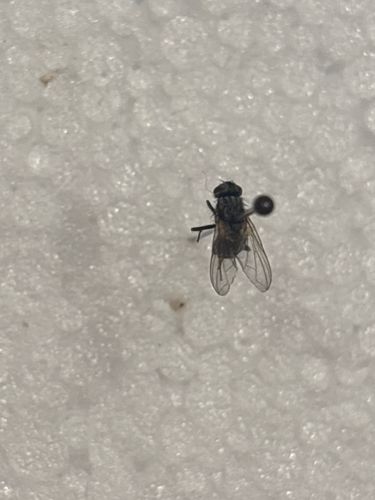Possibly a type of fly (e.g., house fly or similar muscid fly)
Scientific Name: Not definitively identifiable from the image, but likely within the family Muscidae or a related family. Common house fly is Musca domestica.
Order & Family: Order: Diptera, Family: Muscidae (or similar Acalyptratae family)
Size: Typically 3-8 mm (0.12-0.31 inches) in length.

Natural Habitat
Widely distributed, often found in human dwellings, farms, garbage dumps, and areas with decaying organic matter. Larvae develop in moist, decaying organic material.
Diet & Feeding
Adults feed on a variety of liquid or semi-liquid substances, including decaying organic matter, nectar, fruit juices, and animal secretions. They use sponging mouthparts to liquefy solid food.
Behavior Patterns
Flies are often seen resting on surfaces, flying erratically, and landing on food or other materials. They are known for rapid reproduction and can complete a life cycle in a short period (days to weeks), going through egg, larva (maggot), pupa, and adult stages.
Risks & Benefits
Potential risks include being a vector for diseases (e.g., cholera, typhoid fever, dysentery) by mechanically transferring pathogens from contaminated surfaces to food. They can be a nuisance due to their presence and buzzing. In terms of benefits, fly larvae can be detritivores, aiding in decomposition, and adult flies can serve as food for other animals.
Identified on: 9/19/2025